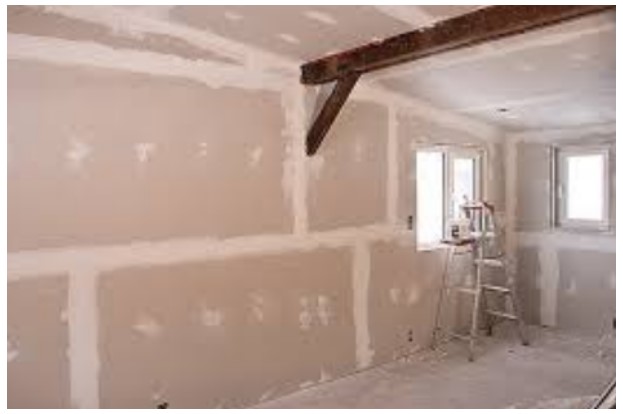It is very important to choose the right building materials when building your new house or remodeling your current residential property. As a matter of fact, the materials you select will determine the durability of your house as well as the characteristics of the build. Actually, there are two common kinds of building materials which are used for your interior walls: plaster and drywall. However, most commercial or residential owners pick drywall over plaster and they’re usually confident with their choice. The following are some of the advantages of having drywall instead of plaster:

1. Drywall is a lot attractive compared to plaster. It is also less-time consuming and much easier to install compared to plaster. Drywall is basically as strong as plaster however, it is way much easier to fix when you have cracks and holes.
2. Drywall is made of tough material known as gypsum, that makes it resistant to fire. The fire will not spread down your wall as fast as wood paneling and some other combustible materials, that gives you a lot of time to escape.
3. Drywall is an eco-friendly material as it can be recycled.
4. Drywall is a more energy-efficient material, that means heat is retained in the rooms during the colder months and cool air, on the other hand, is retained during the summer. It saves energy and lessens your utility bills in the long run.
5. Drywall is more cost-effective compared to plaster since plaster is more difficult to install.
6. Drywall is resistant to insect, fire, as well as mold and moisture.
7. Drywall can be soundproofed. It is a good way to insulate any loud noises in your office building or apartment.
Repairs of Drywall for Average Homeowners
Drywall can definitely take a beating however, it cannot withstand a skateboard that flies away from the rider or a swinging baseball bat. Each residential property owner must have equipment required and the knowledge and ability to fix minor drywall scrapes, small holes and even bumps.
Materials You Will Need
1. Putty Knife
Avail a putty knife which corresponds with the hole size you are about to patch.
2. Sandpaper
A sanding block actually does a good job sanding the whole area smooth without leaving ridges or valleys.
3. Drywall Tape
It helps smoothen the area and also prevents the hole or crack from reappearing after it has been completely repaired. Big holes may also need a piece of self-adhesive mesh rather than just a tape.
4. Drywall Patch Plaster
You might prefer to buy a full repair kit of drywall, and that is totally alright. You will need a container of drywall reinforcement plaster otherwise.
Tips on How to Use Drywall Materials
- Gently sand the area surrounding the hole to smoothen it.
- Apply the drywall tape onto the crack or self-adhesive mesh over the hole.
- Use your putty knife to place the plaster to the mesh or tape, completely filling the whole area.
- Allow it to dry completely.
For more information about the repair and installation of your drywall, contact a professional drywall repair Chilliwack.

Recent Comments